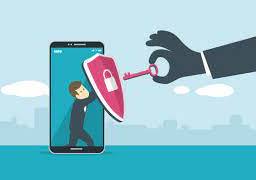 June 2023
June 2023
Major email hacks have been in the news again. Bad actors seem to be everywhere, so this is an excellent time to review some good cyber security practices.
To help protect networks, systems and data here are some basic cyber security routines that people and organizations should implement.
 Passwords
PasswordsThe first item on this list is the use of strong passwords. That means long passwords and I don’t mean just your name backwards. Passwords should be at least eight characters long and use upper- and lower-case letters, numbers and special characters. Longer is better when it comes to passwords. Passphrases are a good idea. Make it something you will remember but not something someone else could easily guess. Do not use the same password for everything. Make up different passwords for different accounts like work, personal, banking, shopping and other online accounts. Write them down and keep them in a safe place. These days it is common for people to have dozens of password secured accounts. You might consider using a password manager to keep track of all your passwords.
Multi-Factor
The next security measure is multi-factor authentication. This adds an additional layer of security by requiring a second form of authentication. A request is sent to another device, usually your smart phone. You must respond, either by entering the code sent to you by the system or an authenticator app on your device. By this method the “hacker” would have to have more than just your username and password. They would have to have your phone as well. It is a good idea to enable two factor authentication wherever possible.
Backups
Make regular backups. Between hackers, fire, floods and other acts of nature, user mistakes and hardware failures it is not a question of if, it is a question of when disaster will strike. Backups are your road back to operational status. Multiple backups are even better. Whether you use cloud based, in-house or a combination of both for your backup it is very important to keep regular backups. In most cases there should be a backup every day. Usually run the backup at night when the system resources are available and it is not impacting the business activities during the day.
Updates
Do the updates. If you have a problem and go to Microsoft tech support one of the first things they ask is, “are you current on updates?”. If not, they tell you to run the updates and call us back if you still have a problem.
Keeping the operating system and other programs current and updated is a very important part of security. Shortly after Microsoft, or any software provider issues a security update, every hacker in the world knows about those vulnerabilities. Armed with that knowledge they go looking for exposed devices that they can compromise.
Sometimes these updates can backfire and break things. I have had updates turn functional devices into paperweights That leave us two choices.
- If you do your updates, you might get screwed.
- If you don’t do your updates, you are almost certain to be screwed.
Given those two choices the might get screwed option is the better plan. Just make sure you make a backup before you do the update.
Firewalls
Most home and small office system have at least on firewall built into the gateway. This may not be the strongest protection, but it is better than nothing. I usually put a second router in the network after the gateway provided by the ISP. That provides a second device with at least some firewall capability between you and the outside world.
It also creates a null network, (a network with no computers on it). Between the gateway and the second router. Many of the more primitive malware entities, and they are still out there but they cannot cross a null network. They need a computer to bridge that gap.
For more information about the network connection for your computer you can type ipconfig /all and press enter. This will provide greater details about the network adapter and the network it is attached to. For a full list of all the available switches for the command type ipconfig /? and press enter.
Segmentation
That leads into the next step in security which is to segment networks and restrict access between those segments. This limits the lateral movement of the attackers. It also helps contain potential breaches. I have often run several separate routers from the gateway with one complete network for the first group of users and a second network for the next group. In some cases, one network had a malware or security problem, but the other network was unaffected.

Least privilege protocol
Everybody does not need full administrative privileges. Limit individual users to just the level of privilege they need to do their job. This will limit the potential impact of a compromised user account and reduce the risk of unauthorized access.
Have a plan
The Incident response is a guide of what to do if there is a cybersecurity problem. It is best to outline the plan before there is a problem. Many organizations don’t think about developing a plan until after the threat has come and gone. The plan should include processes for detection, containment, eradication, investigation and recovery.
Remember that cyber threats are an ever-evolving beast. Cybersecurity must be an ongoing process with periodic assessments. These should include regular audits that include penetration testing, vulnerability scanning and vendor or third-party scrutiny. The results should be reviewed by all parties involved regularly. Procedures and policies should be updated as needed.
If you know someone that you think would enjoy this newsletter, share it with them and ask them to join using the link at the bottom of the page.
And remember — always back it up!